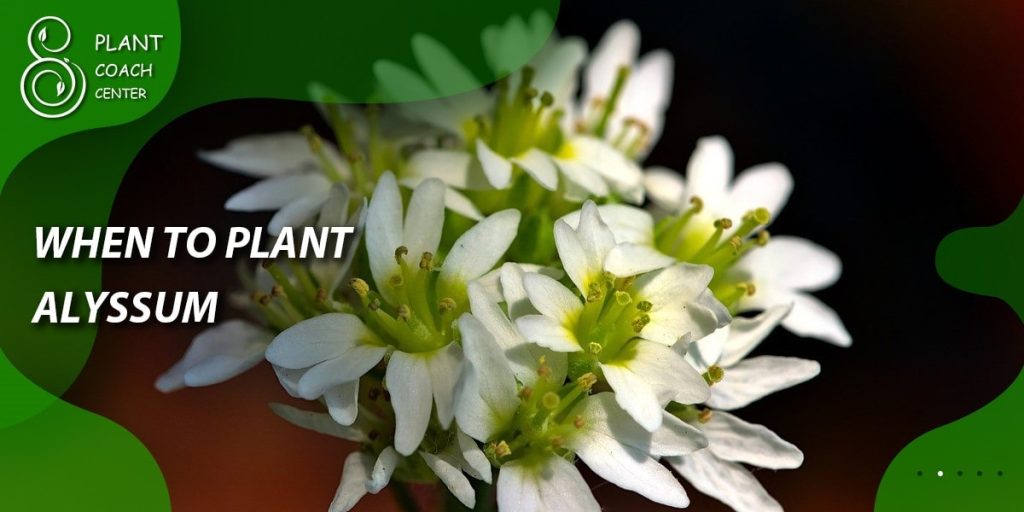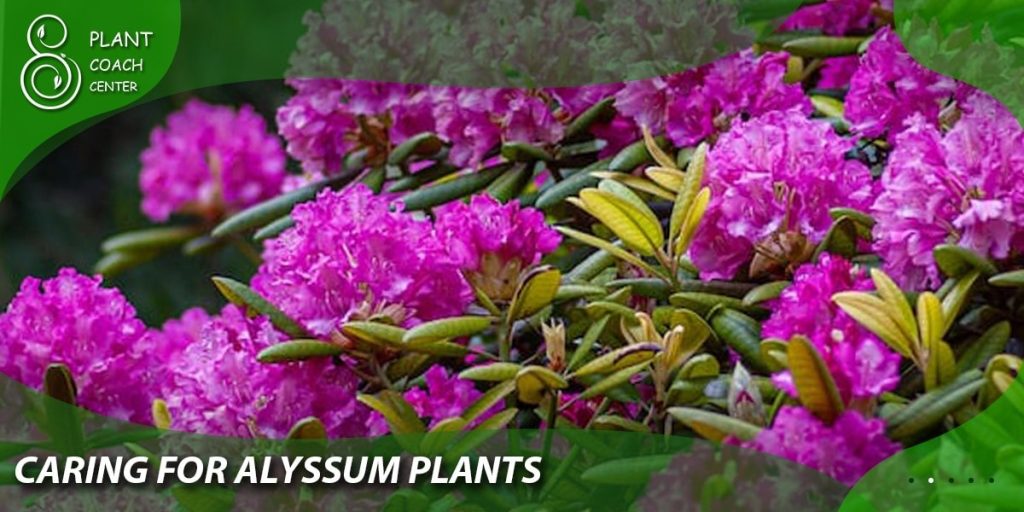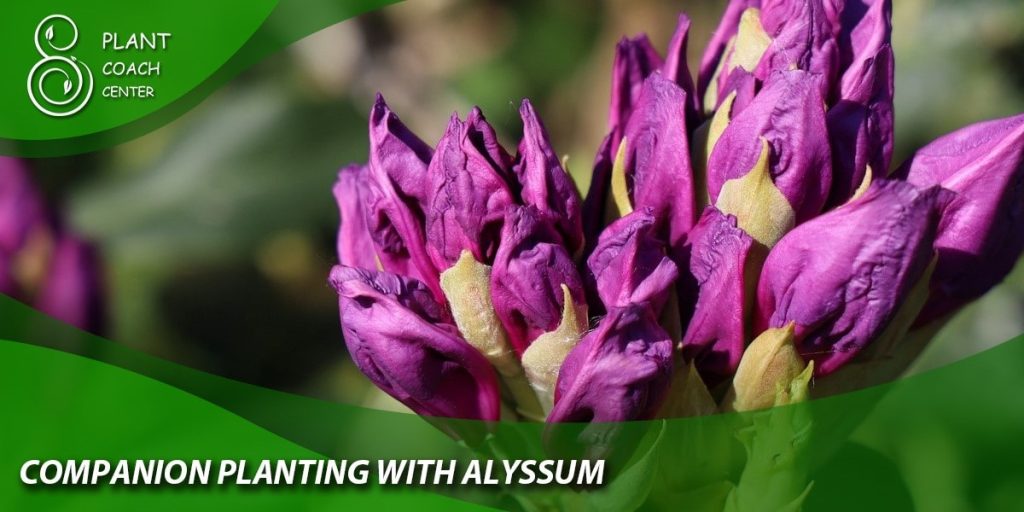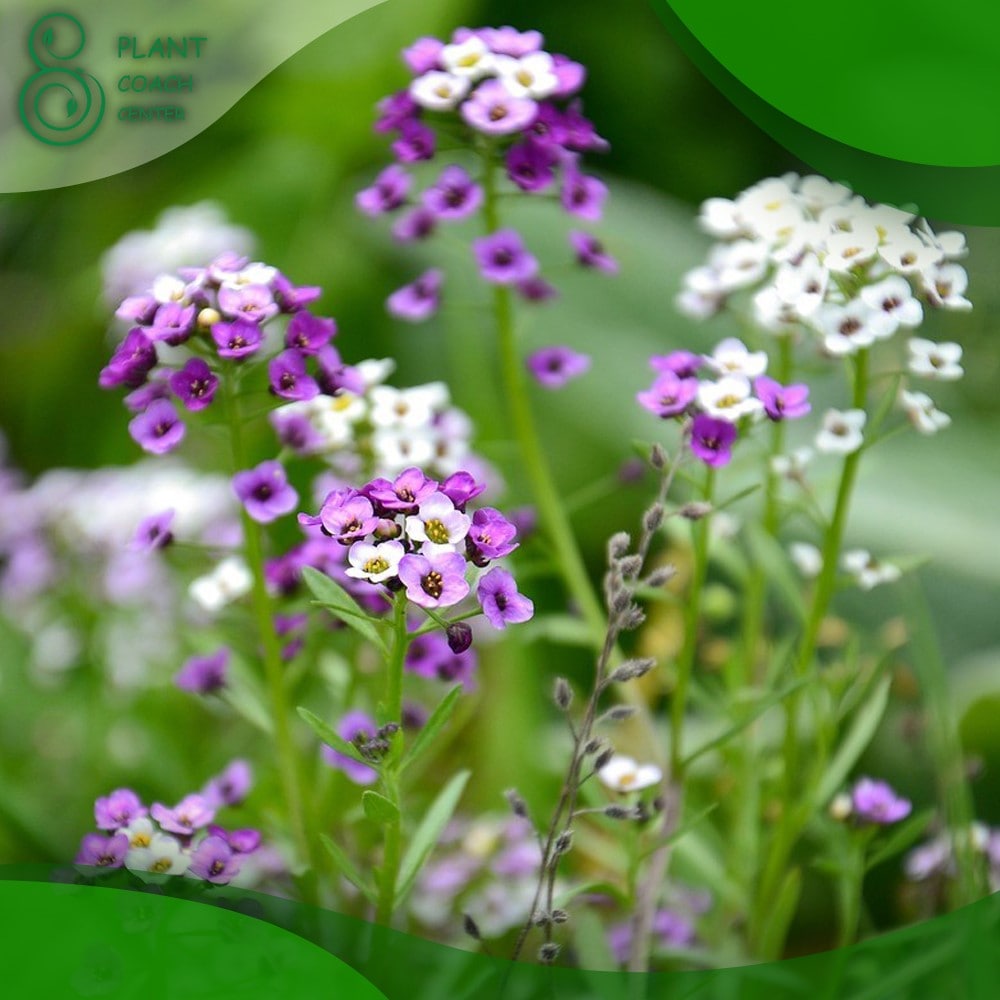When to Plant Alyssum Seeds
As a gardener, you know that growing plants can be a rewarding and fulfilling experience. However, it can also be a challenging task, especially when it comes to knowing when to plant specific types of seeds. In this article, we will discuss when to plant alyssum seeds for successful growth.
We will cover the different types of alyssum plants, their growing conditions, and tips for successful propagation, planting, and care. Additionally, for those who need more in-depth guidance, plantcoachcenter.com is an excellent resource for plant coaching and plant problem-solving.

Understanding Alyssum Plants
Alyssum is a beautiful and fragrant flowering plant that comes in different varieties, including annual and perennial types. They are easy to grow and add a vibrant pop of color to any garden. However, it’s essential to understand that different varieties have specific growing requirements, and failure to meet those requirements can lead to stunted growth or even death.
Different Varieties of Alyssum and Their Specific Growing Requirements
– Annual alyssum: Annual alyssum requires full sun and well-draining soil. They can grow up to 12 inches tall and produce white, pink, or purple flowers.
– Perennial alyssum: Perennial alyssum requires full sun or partial shade and well-draining soil. They can grow up to 12 inches tall and produce white, yellow, or pink flowers.
Common Problems That Can Occur with Alyssum Plants
Alyssum plants are relatively hardy and resistant to pests and diseases. However, they can sometimes suffer from problems such as:
– Overwatering or underwatering
– Root rot
– Fungal diseases
– Aphid infestations
Propagating Alyssum Plants

Propagating alyssum plants can be done through seeds or stem cuttings. Here are some tips for successful propagation of alyssum plants:
Techniques for Propagating Alyssum Plants
– Collect seeds from mature alyssum plants
– Use a well-draining soil mix
– Plant the seeds in a container or bed
– Keep the soil moist but not waterlogged
– Germination can take up to 14 days, so be patient!
When to Propagate Alyssum Plants
The best time to propagate alyssum plants is in the spring or early summer when the plants are actively growing.
Planting Alyssum Seeds
Once you have successfully propagated your alyssum seeds, it’s time to plant them. Here are some steps for planting alyssum seeds:
Preparing the Soil for Alyssum Seeds
– Choose a location with full sun or partial shade
– Use well-draining soil
– Mix in some compost to provide nutrients
When to Plant Alyssum Seeds
The best time to plant alyssum seeds is in the spring after the danger of frost has passed.
Steps for Planting Alyssum Seeds
– Dig a hole twice the size of the seed
– Place the seed in the hole and cover with soil
– Water the soil thoroughly
– Keep the soil moist but not waterlogged
Tips for Successful Planting of Alyssum Seeds
– Plant seeds in groups for a more significant impact
– Consider planting in containers for easy movement

Caring for Alyssum Plants
Alyssum plants are relatively low maintenance, but they still require proper care to thrive. Here are some tips for caring for alyssum plants:
Watering Requirements for Alyssum Plants
– Water the soil when it becomes dry
– Do not overwater or let the soil become waterlogged
Fertilizing Requirements for Alyssum Plants
– Use a balanced fertilizer once a month during the growing season
– Do not fertilize during the winter months
Pruning and Shaping Alyssum Plants
– Deadhead flowers to encourage more blooms
– Cut back the foliage after it dies back in the fall
Common Problems That Can Occur with Alyssum Plants and How to Address Them
– Overwatering or underwatering: Adjust watering as needed
– Root rot: Improve soil drainage
– Fungal diseases: Use a fungicide
– Aphid infestations: Use insecticidal soap or neem oil
Tips for Successful Care of Alyssum Plants
– Plant alyssum in well-draining soil
– Consider planting in containers for easy movement
– Keep an eye out for common problems and address them promptly

Companion Planting with Alyssum
Companion planting is a beneficial gardening practice that involves planting two or more plant species in close proximity to one another. Here are some best companion plants for alyssum and their benefits:
– Nasturtiums: Attract beneficial insects like ladybugs and lacewings that feed on aphids and other pests.
– Marigolds: Repel pests like nematodesand whiteflies and add a pop of color to the garden.
– Lavender: Attracts pollinators like bees and butterflies and adds a lovely fragrance to the garden.
Benefits of Companion Planting with Alyssum
– Attract beneficial insects that can help control pests
– Help improve soil health
– Add aesthetic value to the garden
Conclusion
In conclusion, growing alyssum plants can be a rewarding experience if you understand their specific growing requirements. This article has covered the different varieties of alyssum plants, their growing conditions, and tips for successful propagation, planting, and care. Additionally, we have discussed common problems that can occur with alyssum plants and provided solutions for addressing them.
For those who need more guidance, plantcoachcenter.com is an excellent resource for plant coaching and problem-solving. Remember, with proper care and attention, your alyssum plants will thrive and add a beautiful touch to your garden.
What is the best soil mix for alyssum plants?
Alyssum plants prefer well-draining soil with a pH between 6.0 and 7.5. You can mix in some compost or other organic matter to improve soil quality.
How often should I water my alyssum plants?
Water your alyssum plants when the soil becomes dry. Avoid overwatering, as it can lead to root rot.
Can I grow alyssum in containers?
Yes, alyssum plants can be grown in containers. Make sure the containers have drainage holes to prevent waterlogging.
How often should I fertilize my alyssum plants?
Use a balanced fertilizer once a month during the growing season. Avoid fertilizing during the winter months.
Can I plant alyssum with other plants?
Yes, alyssum is a great companion plant and can be planted with other plants like marigolds, nasturtiums, and lavender.








